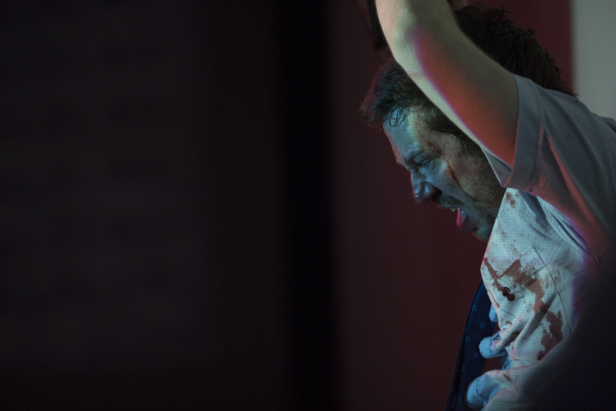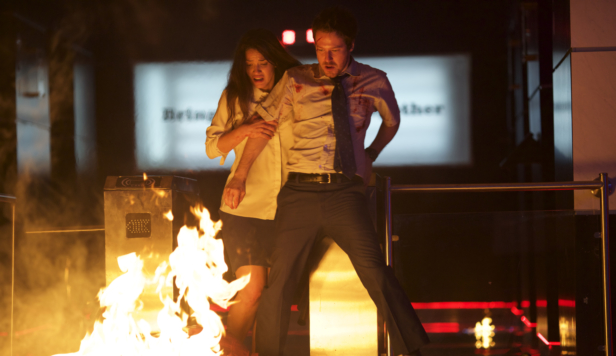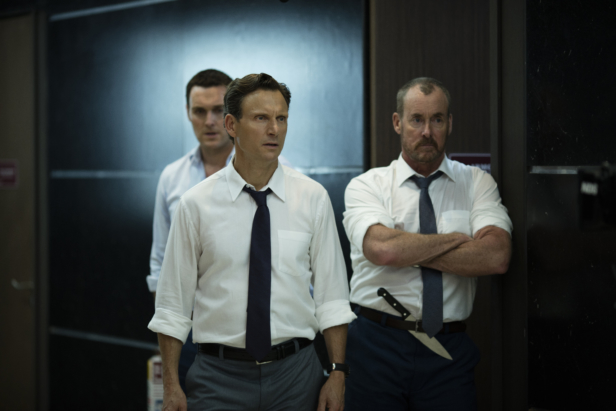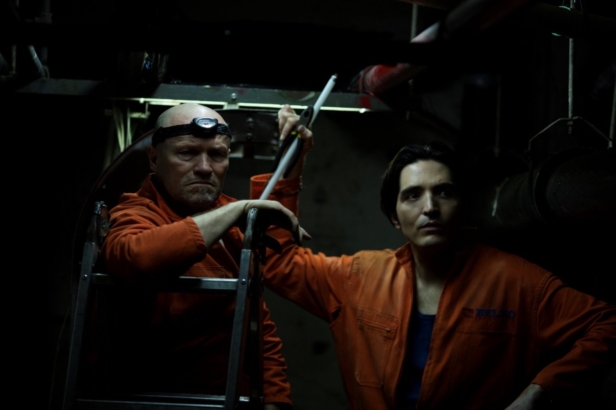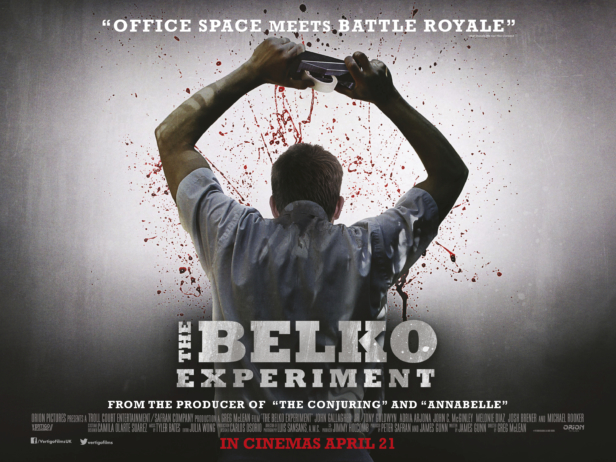There are very few filmmakers who know how to deliver a punch to the gut like Greg McLean. The writer-director of the Wolf Creek films shocked audiences around the globe with his brilliant, intelligent and utterly horrifying creation, which made him the perfect choice to direct James Gunn’s brutal, darkly comic horror The Belko Experiment.
This film finds the headquarters of an American corporation in Colombia suddenly under lockdown, with the employees being told that they must kill each other, or it will be done for them. As factions form between the white collar male elite and the rest of the group, things get messy, fast. It’s funny, it’s fast-paced and it’s gruesome.
“The first thing was the script was completely bananas,” McLean tells us. “It was incredibly well written, amazing characters, really funny, and just a completely nuts movie. The kind which you don’t really see that often, particularly in Hollywood. I was kind of surprised this film was being sent around and then when it was sent to me, I was surprised it was actually going to happen. I thought ‘Someone’s got to have some major balls to make this movie!’ I just fell in love with it because I thought it would be an amazing experience for the audience, so I thought I should do everything to try and get the job.”
It feels like this could have gone very wrong in the wrong hands. Was it difficult to find the balance between humour and horror?
Yeah, it does walk a very line between being incredibly disturbing and incredibly funny. And I think there will be some people who find it so horrifying that they don’t quite get the joke, and some people who totally get it and laugh the whole way through. Because it is in one sense a satire, you can’t take it in any other way, it’s a horror satire movie as well being a thriller, as well as being a comedy, and so it’s got all these different things going on with it, which makes it a different experience to your average horror film.
I think the main thing was to approach it seriously, to approach it artfully. The bad version of this film is where it feels cheap and not taken seriously by the actors and it doesn’t feel like it’s a real thing. I think the trick with this is to do it absolutely straight-faced. The more straight and serious you play it, the funnier and more horrifying it is.
So I think that was my goal as a director, to try and maintain that sense that this is really happening all the way through, and to me that would elucidate the horror even further, and also the comedy, because you’re not setting up gags, you’re just watching characters react to situations. So that was my main emphasis, to try and keep it really realistic and at the same time allowing the audience moments where it’s obviously supposed to be funny. So some of the musical choices and some of the editorial choices are really about setting up sight gags or setting up moments of relief inside the darkness, because if it’s too bleak…there’s a limit after which the audience won’t go there anymore.
There’s a great ensemble cast. Was there anyone you had in mind from the get-go?
There was in terms of the style of actors we wanted to find. First of all, actors who felt right for the role, but also actors who had a very naturalistic performance style, and I think John [Gallagher Jr] has that. He’s just a great actor and he completely vanishes into a part.
James and I were both amazed and delighted by the cast we got together, it was an amazing bunch of people. I think it’s pure luck, the people we managed to get together, because they really were a fantastic bunch of people. A great cast, and a great supporting cast as well, because as well as the 20 main cast we took from the US we had great actors from Colombia, a lot of whom were very well-known established TV actors, who were playing supporting roles.
My main thing is that you’ve got to be able to point the camera anywhere, and every single person in the room has got to be acting as hard as the main characters because it helps to focus on the action.
The Wolf Creek films obviously take place in this amazing empty landscape. Was it a challenge to make a film that’s almost entirely set in one building?
That was one of the reasons I wanted to do the movie, because I’d done a couple of films that featured the landscape as a character and they’re all about characters being isolated in the landscape. The opportunity to have a film that needed me to use interior space creatively, to create different dynamics and emotions just within rooms and offices, was really hugely attractive.
A lot of my focus was trying to make sure that each interior space looked different, was lit differently, and that we told the story through the development of the film. So it starts as one particular colour and personality and then it evolves, it keeps on evolving. If you’re using all the elements of cinema, the size of the frame, the colours, the angles, all of these things to suggest character and to suggest emotion to the audience, which is great fun. That was really fun for me and that was the real challenge to me to make that constantly visually intriguing.
They also have a strong social and political element to them, as does this. Was that partly what drew you to The Belko Experiment?
I guess you’re drawn to ideas that you want to talk about, and sometimes it’s conscious and sometimes it’s unconscious. I think as a filmmaker, whatever’s going on in your psyche will find its way into the film. And some people are self-aware enough to know what that is, other people are just drawn to things and you end up telling this idea and you go “Oh ok, that’s what I wanted to talk about without realising it.”
With this one I was very conscious of what this film was about to me. I thought it was a great way to talk about the evil of corporate mentality, to me that was what it was about. That, to me, was the essence of what the horror was. When you have corporate ideology and corporations that essentially run the planet, removing any kind of barriers to humanity, you then have the opportunity for massive evil to take place, which I think is a real thing that happens, we see it every day. You see this philosophy at work and obviously this film is a heightened version of that concept because it literally says “We just want to see what people will do when we push them to the edge.”
You can see that happening in governments, you can see this happening all over the world. So that was an interesting thing to play with and it’s interesting to see how many people picked up on that was what the movie was about. And this goes into the conspiracy element as well. Is there a global conspiracy of individuals or corporations who are essentially controlling the entire world? Some people ascribe to those theories, new world order and all that kind of stuff, and these are all things that I was talking about in pre-production with the actors because we discussed deeply what it’s about, what’s the point of the story? To me all of those ideas are in the concept, as well as being a fun and completely berserk movie.
Finally, do you remember the first horror film you saw?
I think Texas Chain Saw Massacre. In the house I grew up in we weren’t really allowed to watch that kind of movie. We were a pretty conservative Catholic, Hitchcock was as far as we got, and then I went to a friend’s house and someone rented Texas Chain Saw Massacre and it blew my mind out. It put something very deep and dark in my brain that I’ve been trying to escape from ever since.
The Belko Experiment is in UK cinemas on 21 April. Keep up with the latest genre news with the new issue of SciFiNow.
